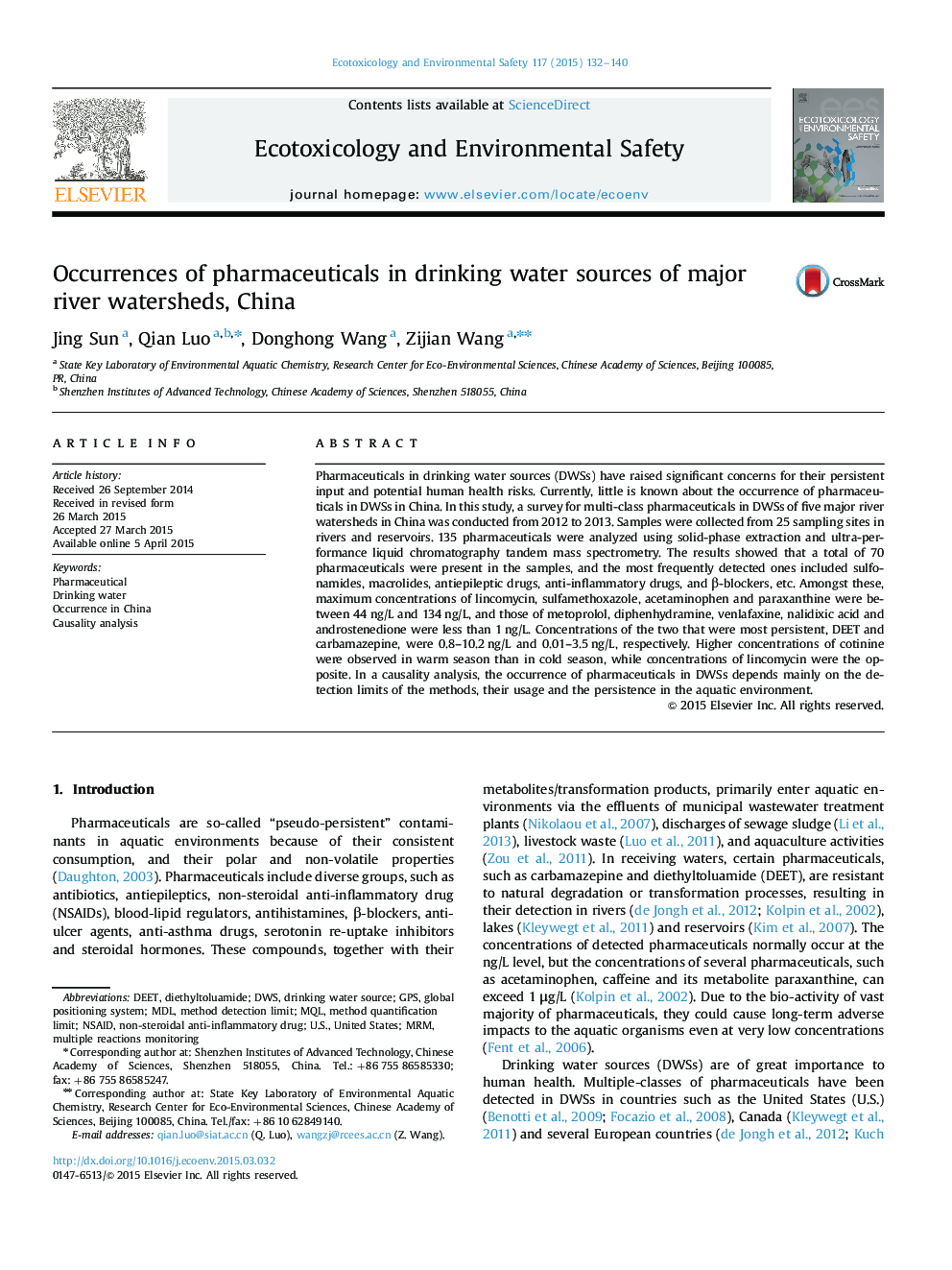| کد مقاله | کد نشریه | سال انتشار | مقاله انگلیسی | نسخه تمام متن |
|---|---|---|---|---|
| 4419598 | 1618946 | 2015 | 9 صفحه PDF | دانلود رایگان |
• Multiple-classes of pharmaceuticals in drinking water sources in China were surveyed.
• Seventy of 135 pharmaceuticals were detected.
• Concentrations of lincomycin and paraxanthine ranked the highest.
• Pharmaceutical usage is related to their occurrence in aquatic environment.
Pharmaceuticals in drinking water sources (DWSs) have raised significant concerns for their persistent input and potential human health risks. Currently, little is known about the occurrence of pharmaceuticals in DWSs in China. In this study, a survey for multi-class pharmaceuticals in DWSs of five major river watersheds in China was conducted from 2012 to 2013. Samples were collected from 25 sampling sites in rivers and reservoirs. 135 pharmaceuticals were analyzed using solid-phase extraction and ultra-performance liquid chromatography tandem mass spectrometry. The results showed that a total of 70 pharmaceuticals were present in the samples, and the most frequently detected ones included sulfonamides, macrolides, antiepileptic drugs, anti-inflammatory drugs, and β-blockers, etc. Amongst these, maximum concentrations of lincomycin, sulfamethoxazole, acetaminophen and paraxanthine were between 44 ng/L and 134 ng/L, and those of metoprolol, diphenhydramine, venlafaxine, nalidixic acid and androstenedione were less than 1 ng/L. Concentrations of the two that were most persistent, DEET and carbamazepine, were 0.8–10.2 ng/L and 0.01–3.5 ng/L, respectively. Higher concentrations of cotinine were observed in warm season than in cold season, while concentrations of lincomycin were the opposite. In a causality analysis, the occurrence of pharmaceuticals in DWSs depends mainly on the detection limits of the methods, their usage and the persistence in the aquatic environment.
Journal: Ecotoxicology and Environmental Safety - Volume 117, July 2015, Pages 132–140
